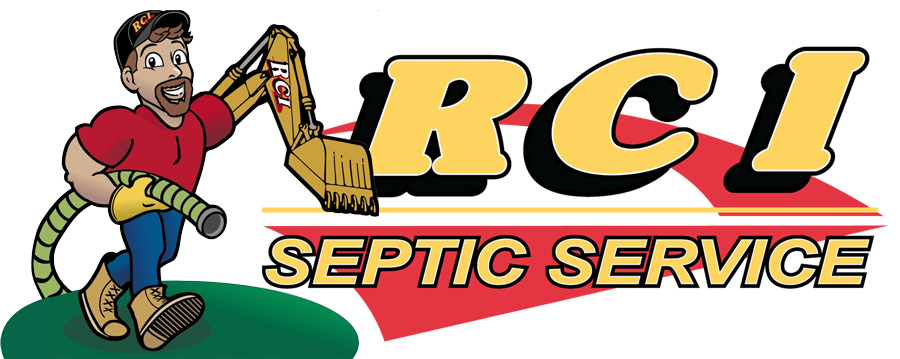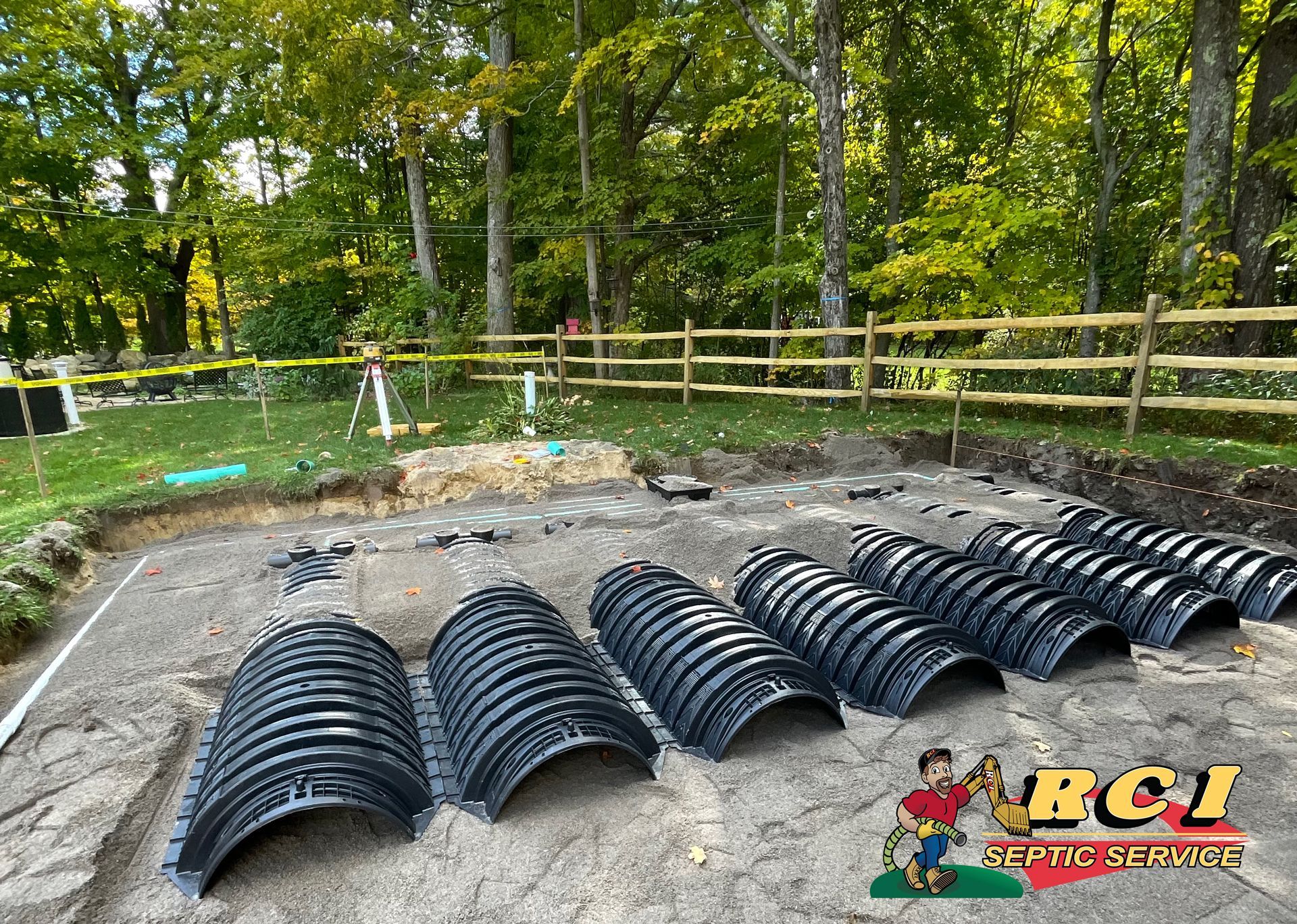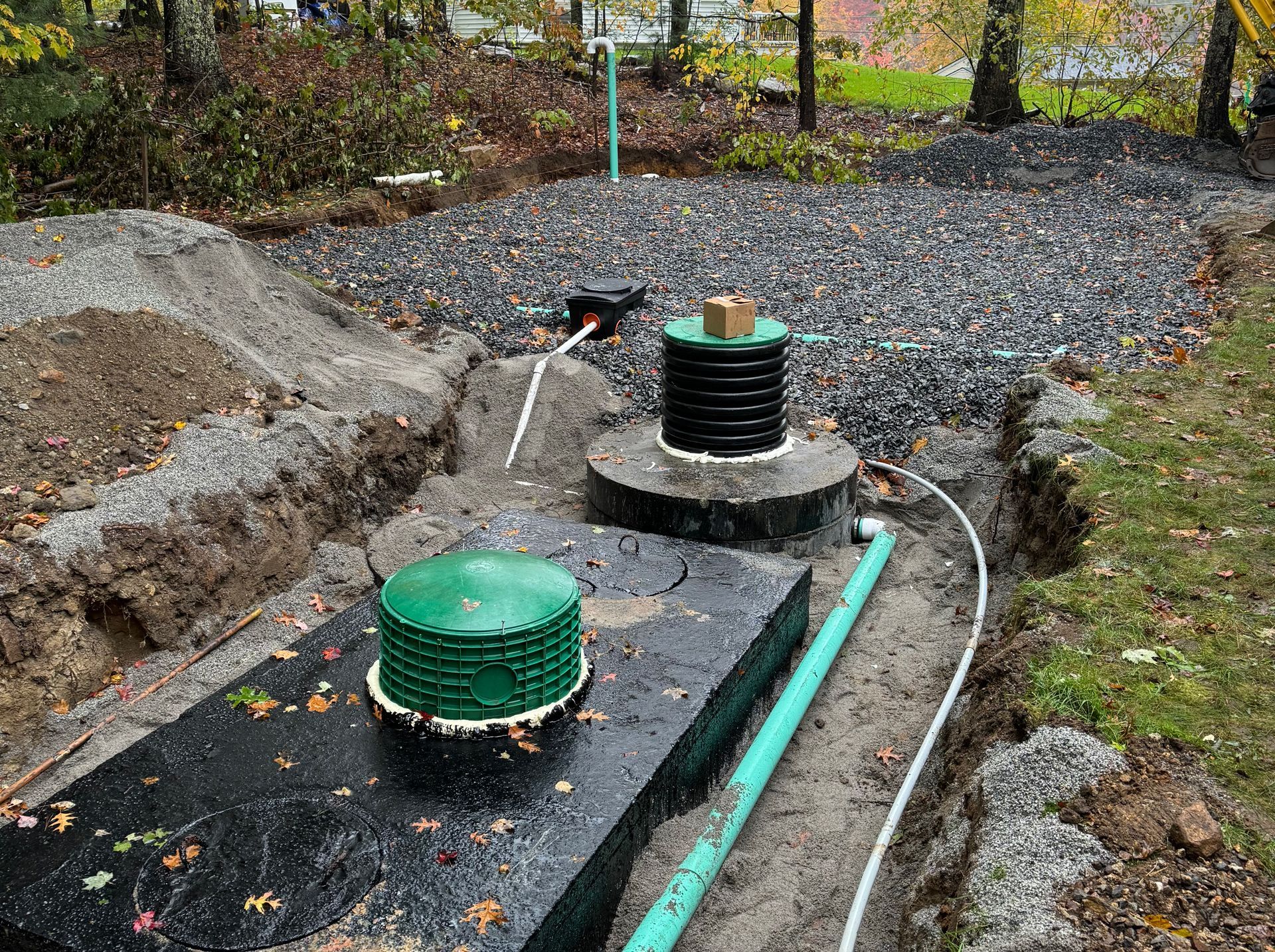Understanding the Pump Septic System: Maintenance & Benefits
Need to pump your septic system? Regular pumping of your pump septic system is key to avoiding backups and expensive repairs. This article explains when to pump, signs your tank is full, and what happens during the pumping process.
Key Takeaways
- Regular septic tank pumping recommended every one to three years, is essential to prevent sewage backups and costly repairs.
- Recognizing signs of a full septic tank, such as slow drainage and unpleasant odors, helps prevent major issues and maintains system efficiency.
- Choosing a reliable septic service provider with proper licensing and experience is crucial for effective maintenance and the longevity of your septic system.
The Importance of Regular Septic Tank Pumping
Regular septic tank pumping is crucial for preventing sewage backups and costly repairs. Over time, sludge and scum build up in the tank. If left unchecked, this accumulation can overwhelm the drain field, leading to severe and expensive damage. The general recommendation is to have your septic tank pumped every two to five years, depending on the tank’s size and usage.
Routine maintenance involves more than just pumping; it also includes regular inspections to monitor sludge levels and overall system health. Most homeowners don’t need to pump their septic tanks annually, but ignoring the signs of a full tank can lead to premature system failures and costly repairs.
Consistent maintenance extends the life of your septic system and saves money by preventing major issues before they start.
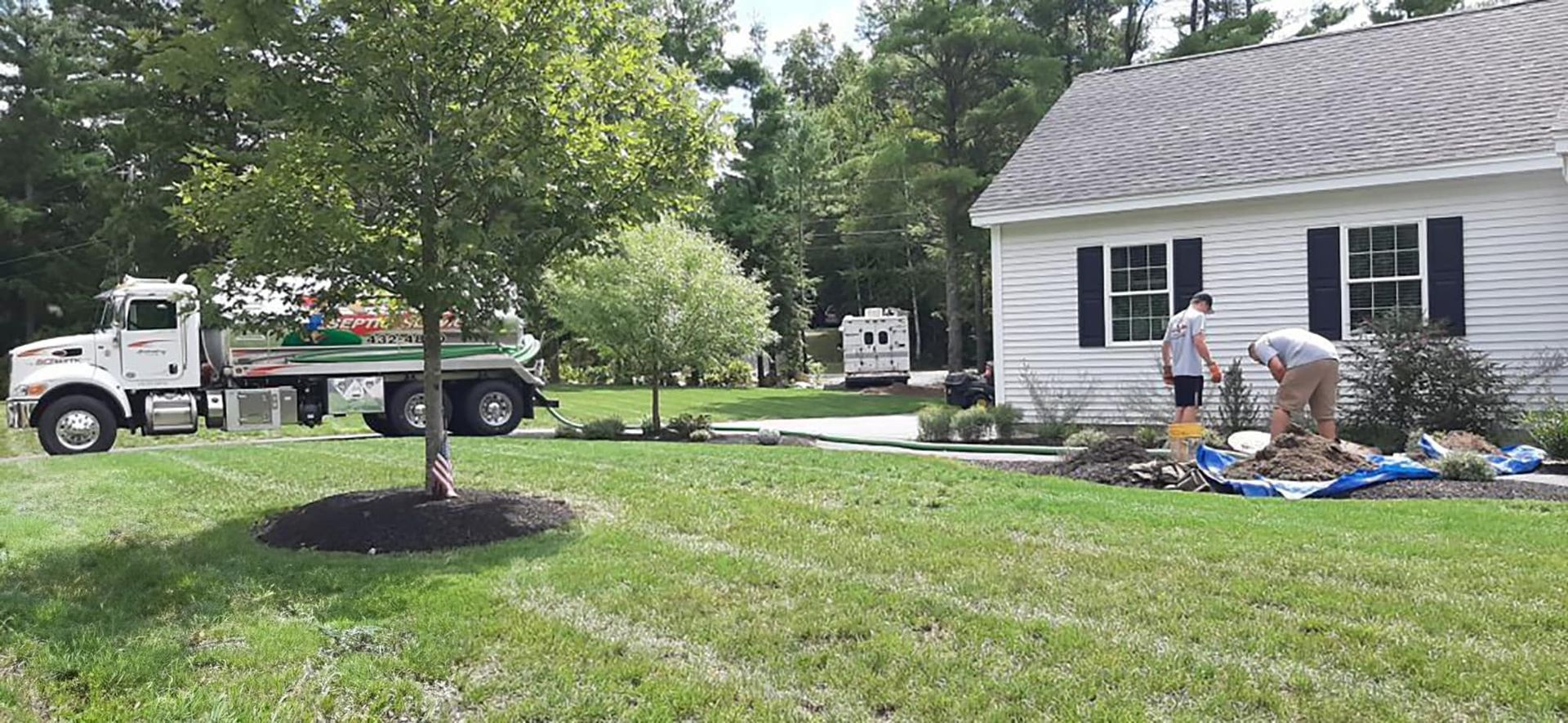
How Often Should You Pump Your Septic Tank?
Septic tank pumping frequency depends on several factors, including household size, water usage, and whether you use a garbage disposal. While a general guideline is every three to five years, RCI Septic Service in Londonderry, NH, recommends a more specific schedule:
- Households of 5 or more: Every year
- Households of 3-4: Every 2 years
- Households of 1-2: Every 3 years
Regular pumping is essential to keep your septic system functioning properly. If sludge levels reach 12 inches or the scum layer builds up to 6 inches, it's time to schedule a pump-out to prevent clogs and backups.
You can help extend the time between pumpings by reducing water usage—taking shorter showers, running dishwashers and washing machines with full loads, and being mindful of what goes down the drain. Monitoring your household’s specific needs and septic tank levels ensures an optimal pumping schedule and smooth operation.
If you’re unsure when your septic system was last pumped, contact RCI Septic Service for expert advice and reliable service.
Signs Your Septic Tank Needs Pumping
Recognizing signs that your septic tank needs pumping can prevent more significant problems later. Slow drainage, unpleasant odors around your property, and wet spots in your yard are common indicators. These signs often point to an impending issue that requires immediate attention. Slow drains and persistent odors usually suggest that the tank is full and needs to be emptied to prevent sewage from backing up into your home.
Proper waste disposal is key to maintaining your septic system. Avoid flushing non-biodegradable items like wipes and plastics, which can create blockages and necessitate more frequent pumping. By being mindful of what goes into your septic system, you can help maintain its efficiency and prolong the time between necessary pump-outs.
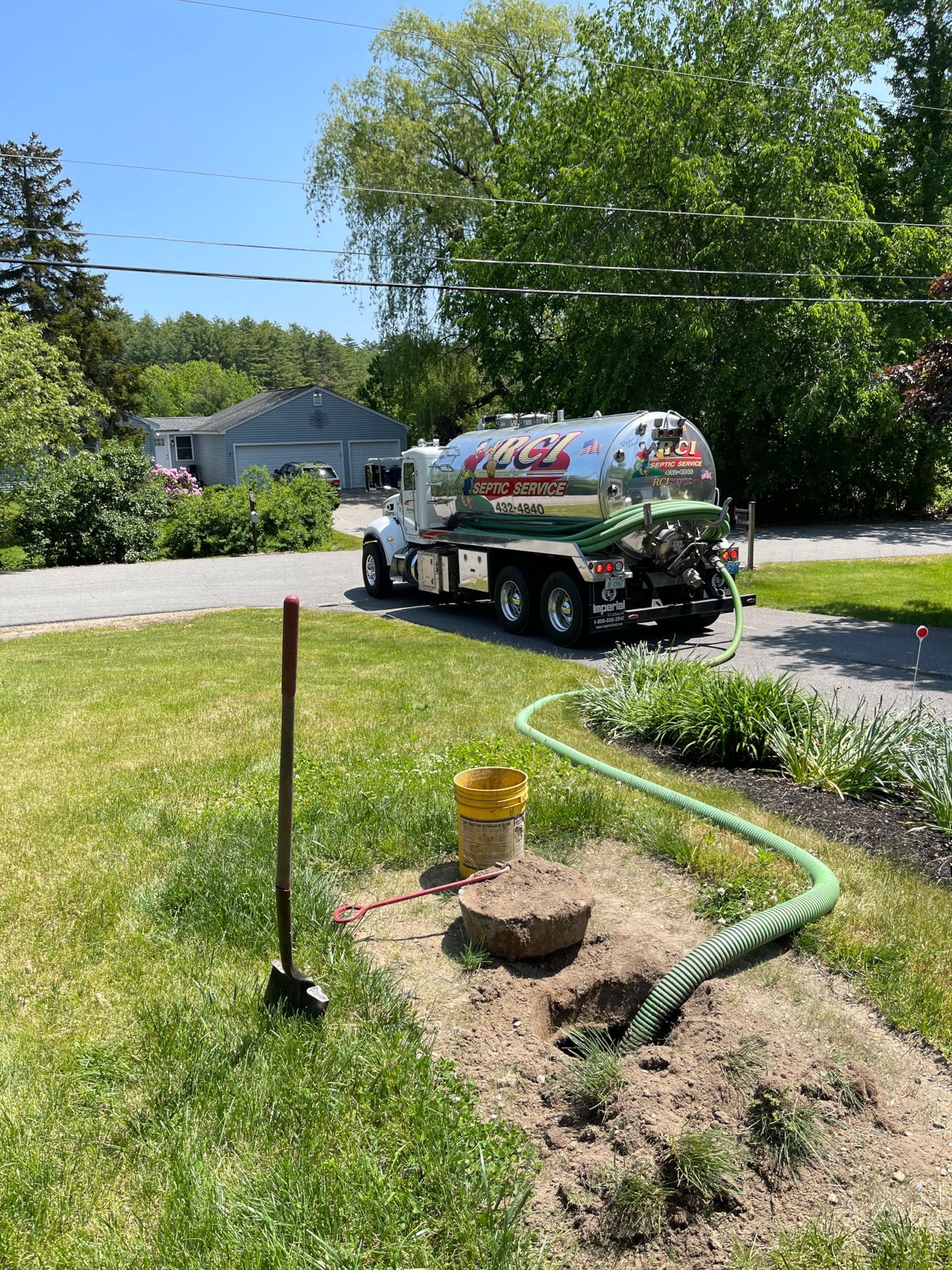
The Septic Pumping Process
Understanding the septic pumping process clarifies what happens during a service visit and why it’s important. Typically, the process lasts between 15 minutes to an hour, depending on the tank size and the amount of waste. A vacuum pump is used to extract both liquid and solid waste, ensuring the tank is thoroughly cleaned. This involves specialized equipment to safely remove the sludge and scum layers that accumulate over time.
Observing the process from start to finish illustrates the importance of routine maintenance. Regular pumping prevents the buildup of materials that can clog the system and cause backups. This protects your property and ensures the efficient operation of the septic system, keeping household wastewater flowing smoothly.
Locating Your Septic Tank
Locating your septic tank is essential before scheduling a pumping service. Many homeowners are unsure of their tank’s exact location, especially if it’s buried. Consulting a map or layout of your property can help, and knowing the location is crucial for easy access.
This ensures the process can be carried out efficiently without unnecessary delays or additional costs.
What Gets Removed During Pumping
Two primary layers are removed during the pumping process: the sludge layer at the bottom and the scum layer on top. These layers consist of solid waste and grease that accumulate over time, and their removal prevents system clogs and backups. The sludge layer can become problematic if not regularly removed, as it reduces the tank’s capacity and efficiency.
The pumping process thoroughly extracts these layers, maintaining the tank’s optimal function. Removing accumulated waste allows the system to treat household wastewater effectively, preventing potential health hazards and environmental contamination.
Post-Pumping Inspection
After pumping, a thorough inspection ensures everything is in proper working order. Technicians check the tank’s interior and exterior for signs of damage or root intrusion, which could compromise the system’s integrity. They also inspect critical components like baffles and the dividing wall to ensure there are no blockages or deterioration.
This post-pumping inspection identifies and addresses potential issues before they become major problems. Catching issues early helps homeowners avoid costly repairs and ensures their septic system operates efficiently.
Regular inspections, combined with routine pumping, form a comprehensive maintenance strategy that keeps your septic system in top shape.
Types of Septic Systems and Their Pumping Needs
Septic systems come in various types, each with unique pumping needs and maintenance requirements. The most common are conventional systems and alternative systems, such as aerobic treatment units and mound systems. Knowing your system's specific needs is crucial for maintaining its efficiency and longevity. All types of septic systems require regular inspections and pumping, typically every three to five years.
Maintaining a balanced bacterial environment within the tank is vital. An imbalance can slow down waste decomposition, leading to more frequent pumping. Understanding different systems and their unique requirements helps homeowners better manage maintenance and avoid unexpected issues.
Conventional Systems
The most common septic system consists of a septic tank and a subsurface wastewater infiltration system. These systems are effective but require regular maintenance to prevent clogs and ensure efficient operation. Aging conventional systems often need more frequent attention due to reduced efficiency and increased likelihood of clogs.
Maintenance costs for conventional systems can vary significantly based on tank size and usage. Regular inspections and pumping are crucial to keep these systems functioning properly and avoid costly repairs.
Alternative Systems
Alternative septic systems, such as aerobic treatment units (ATUs) and mound systems, offer different approaches to wastewater treatment. ATUs enhance bacterial activity by injecting oxygen into the tank, improving nutrient treatment and decomposition. Mound systems are used in areas with shallow soil or high groundwater. They filter effluent through sand before dispersing it into the soil. The aerobic system plays a crucial role in this process.
These systems require periodic maintenance to ensure proper operation. For example, sand filters are more expensive but provide advanced treatment, and effluent occurs pumps need regular checks to prevent failures. Knowing the specific maintenance needs of alternative systems helps ensure they remain effective and reliable.
Specialized Pumps
Specialized pumps are critical in many septic systems, especially in alternative setups. An effluent pump moves wastewater from the septic tank to the drain field, which is essential for the system’s operation. Sewage ejector pumps handle waste from lower levels, such as basements, and move it to the septic system.
These pumps, including grinder pumps, are tailored for specific applications within septic systems and the pump chamber. Proper installation and maintenance are crucial, as incorrect positioning can cause system failures.
Understanding the role and needs of specialized pumps helps homeowners ensure their septic systems operate efficiently and reliably.
Preventative Measures to Reduce Pumping Frequency
Preventative measures can significantly extend the time between septic tank pump-outs. Proper waste disposal, regular maintenance, and water conservation are key strategies for achieving this. Adopting these practices maintains your septic system’s efficiency, reduces the frequency of pump-outs, and saves money in the long run.
A well-maintained septic system benefits the homeowner and contributes to community health by effectively treating household wastewater and minimizing the risk of disease spread. These preventative measures ensure the longevity and reliability of your septic system.
Proper Waste Disposal
Proper waste disposal maintains the efficiency of your septic system. Only human waste and toilet paper should be flushed down the toilet. Flushing non-biodegradable items like wipes and plastics creates blockages and leads to more frequent pumping needs.
Adhering to these disposal guidelines prevents costly repairs and ensures your septic system functions effectively.
Regular Maintenance
Regular maintenance ensures the longevity of your septic system. Routine inspections identify potential issues early, preventing them from escalating into problems that necessitate more frequent tank pumping. Inspections, ideally every three years, detect issues before they require a pump-out, saving time and money.
Applying septic system treatments regularly enhances the breakdown of solid material, potentially reducing the frequency of required pump-outs. Water-saving practices decrease the amount of wastewater entering the system, lowering the need for pumping.
Regular maintenance ensures your septic system remains efficient and reliable.
Water Conservation
Water conservation is a vital strategy for reducing the strain on your septic system. Limiting water usage, such as taking shorter showers and running dishwashers and washing machines with full loads, minimizes wastewater volume entering the tank. This practice prevents overloading the system and reduces the need for frequent pumping.
Adopting water-saving practices enhances the efficiency and longevity of septic systems. These measures benefit the septic system and contribute to overall water conservation efforts, promoting sustainability.
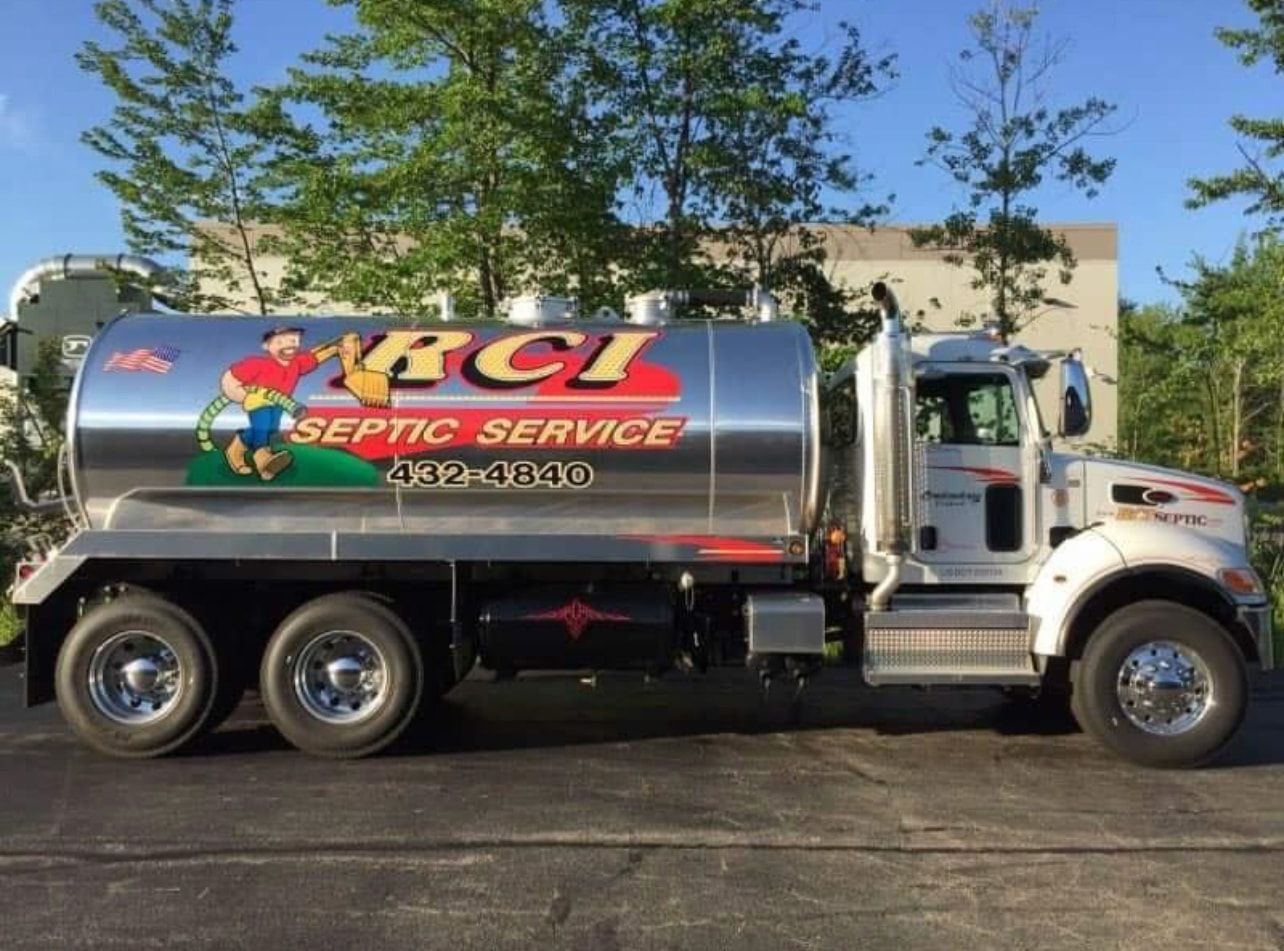
Choosing a Reliable Septic Service Provider
Choosing a reliable septic service provider ensures your system functions correctly. Look for companies with proper licensing and insurance to ensure they can perform septic services safely and effectively. Reviews and testimonials provide insights into the reliability and quality of the company’s services.
Consider the provider’s experience and reputation in the community before making a decision. Routine maintenance costs for septic systems range from $250 to $500 every few years, much less than repairing or replacing a damaged system, which can cost thousands.
Choosing the right provider ensures the longevity and efficiency of your septic system.
What to Look For in a Septic Service Company
Ensure a septic service company has the necessary licenses and insurance to perform septic services. This guarantees their legitimacy and protects you from liabilities during service. Experience is another critical factor; a seasoned company like RCI Septic Service, with over 25 years in operation, is more likely to address issues effectively and efficiently.
In addition to licenses and experience, inquire about the company’s service guarantees and warranty options. These can provide peace of mind, knowing that the company stands behind its work. Reliable companies will also have positive reviews and testimonials from past clients, reflecting their commitment to quality service.
Questions to Ask Before Hiring
Before hiring a septic service provider, ask for proof of insurance to protect against liabilities during service. It’s also important to determine what type of septic pump you have and ensure the provider has experience with that specific type.
Additionally, inquire about their process, emergency response time, and the scope of services they offer. These questions will help ensure you choose a provider well-suited to your needs.
Summary
Maintaining your septic system through regular pumping and inspections is crucial for preventing costly repairs and ensuring the system’s longevity. From understanding the signs that your septic tank needs pumping to knowing the different types of systems and their specific maintenance needs, being informed can save you time, money, and stress. Implementing preventative measures like proper waste disposal and water conservation can further extend the time between pump-outs and enhance the system’s efficiency.
Choosing a reliable septic service provider is also a key part of maintaining your system. By selecting a company with the right credentials, experience, and customer service, you can ensure your septic system remains in good hands. Remember, regular maintenance is not just about preventing issues but also about safeguarding your investment and the health of your community. Take proactive steps today to keep your septic system running smoothly for years to come.
Frequently Asked Questions
How do septic tanks work?
Septic tanks operate by allowing wastewater to settle, where solids sink to the bottom and scum floats to the top, typically retaining the wastewater for at least 24 hours to facilitate this process. This mechanism enables up to 50% of the solids to decompose into liquids and gases.
Can I pump my septic myself?
You cannot pump a septic tank yourself; it requires a trained professional and specialized equipment. It is strongly advised to hire a certified septic tank pumping service to ensure safety and proper waste management.
How much does it cost to have a septic system pumped?
The average cost to have a septic system pumped is approximately $395, with prices ranging from $294 to $514 depending on factors such as tank size. Therefore, it is advisable to consider these variables when budgeting for septic tank pumping.
What is a pump septic system?
A pump septic system utilizes an electric pump to move wastewater from the septic tank to a drain field, activating via a float switch as the tank fills. This mechanism ensures efficient wastewater management and prevents overflow.
How often should I get my septic tank pumped?
We recommend pumping your septic tank annually for households with 5 or more people, every 2 years for homes with 3-4 residents, and every 3 years for households of 1-2. Regular maintenance is essential to keep your septic system running efficiently and prevent potential issues.
